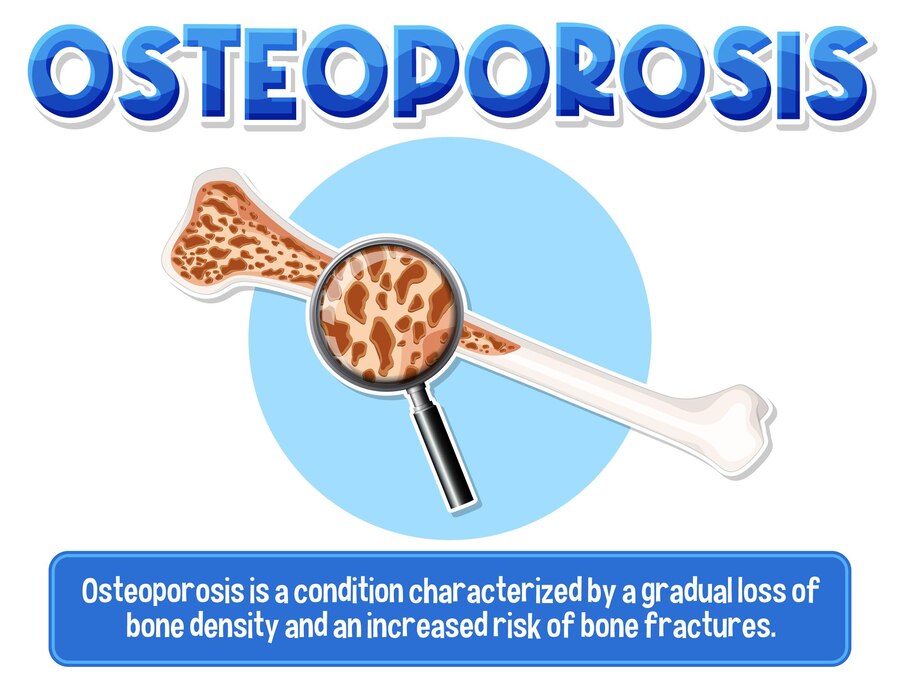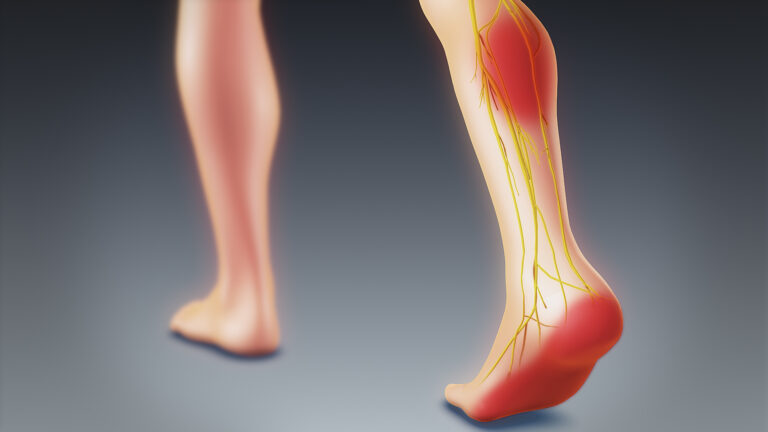Introduction
Dubbed the “silent thief,” osteoporosis is a degenerative bone condition that causes decreasing bone strength and density, increasing the risk of fractures. It impacts millions of people globally, especially postmenopausal women and older adults, but its effects cut across age and gender, making it a public health issue that needs more knowledge and comprehension. Osteoporosis is predicted to become more common as our population ages, underscoring the critical need for efficient prevention and treatment plans.
Knowing the signs of osteoporosis is not enough; one must also be aware of the intricate interactions between environmental, behavioural, and genetic factors that affect bone health. While proper management can improve the quality of life for people who currently have osteoporosis, early intervention can considerably reduce the risk of getting the condition. This article will examine the basic principles of osteoporosis, including its causes, risk factors, and evidence-based prevention and treatment approaches. By educating ourselves about osteoporosis, we may take preventative measures to keep our bones strong and to advance our general health and wellbeing.
What is Osteoporosis?
A substantial loss in bone strength and density is the hallmark of the medical disorder osteoporosis, which raises the risk of fractures. It happens when the body either produces insufficient bone tissue or loses too much bone mass, leaving the bones porous and brittle. This illness, which typically affects the hip, spine, or wrist, generally develops slowly over many years, making it difficult to identify until a fracture occurs.
A person’s age, hormonal fluctuations (especially in women after menopause), lifestyle decisions about food and exercise, and genetic predispositions can all have an impact on osteoporosis.
People who smoke, drink too much alcohol, have a diet deficient in calcium and vitamin D, and perform little weight-bearing exercise may be more susceptible to osteoporosis.
Because the illness is primarily associated with hormonal changes that influence bone density, it is more common in older persons, particularly in postmenopausal women. Though it is less common in younger people, it is vital to note that osteoporosis can affect men and individuals of all ages.
A well-balanced diet high in calcium and vitamin D, frequent exercise, particularly weight-bearing activities, and lifestyle changes like giving up alcohol and smoking are examples of preventive approaches.
Treatment options for osteoporosis patients may include vitamin D and calcium supplements, lifestyle modifications to lower the risk of fractures, and drugs to strengthen bones. In order to diagnose and treat osteoporosis early and help people retain bone health and lower their risk of crippling fractures as they age, routine screenings and aggressive management are crucial.
Risk Factors
The following are some of the elements that lead to osteoporosis development:
Age: Bone mass naturally decreases with age.
Gender: Because of hormonal changes that impact bone density, women are more vulnerable, particularly after menopause.
Family History: People may be more susceptible to osteoporosis if they have a family history of the condition.
Body Frame Size: Less bone mass is typically found in smaller body frames, which raises the risk.
Lifestyle Decisions: Loss of bone density can be caused by smoking, binge drinking, and leading an inactive lifestyle.
Diet: A diet lacking in calcium and vitamin D may prevent bone mineralization.
Prevention Strategies
Even though osteoporosis is a prevalent worry associated with aging, there are preventive steps people can take to stop the condition from developing:
1. Modifications to Diet
Eat a diet rich in calcium-containing foods, such as dairy products, leafy greens, and fortified meals.
Vitamin D: In order to absorb calcium, you must have vitamin D from the sun, fatty fish, fortified milk, and supplements if needed.
2. Frequent Exercise
Weight-bearing activities that increase and maintain bone density include jogging, strength training, and walking. Exercises that improve flexibility and balance, including tai chi and yoga, can lower the chance of falling.
3. Steer clear of risk variables
Give Up Smoking: Since tobacco use greatly raises the risk of osteoporosis, giving up smoking is essential.
Limit Alcohol: Reducing risk can be achieved by limiting alcohol use to reasonable levels (no more than one drink for women and two for men per day).
4. Frequent Examination
Bone density testing should be considered by women over 65 and males over 70. It might be advised for people who have risk factors to start earlier.
Treatment Strategies
Numerous therapy approaches can assist control and lessen osteoporosis in persons who have been diagnosed with the condition:
1. Prescription drugs
Bisphosphonates: These are frequently administered to stop bone deterioration and lower the risk of fracture.
Hormone Replacement Therapy (HRT): This treatment helps increase a woman’s bone density after menopause.
Other Medications: For particular situations, raloxifene, denosumab, and teriparatide are suitable alternatives.
2. Dietary Assistance
Maintaining a balanced diet high in calcium and vitamin D is essential in addition to medication to enhance overall therapy success.
3. Modifications to Lifestyle
Regular exercise that is customized to each person’s ability can increase strength and balance while lowering the risk of falls.
4. Manual Therapy
Creating a personalized exercise program with the assistance of a physical therapist can help with fall prevention by addressing mobility, strength, and balance.
Conclusion
Often referred to as the “silent thief of bone,” osteoporosis is a serious public health issue that can lead to crippling fractures and a diminished quality of life. Though primarily associated with aging, it’s important to understand that it’s not a necessary aspect of becoming older. Osteoporosis can be effectively prevented and controlled by a combination of dietary treatments, therapeutic medicines, and lifestyle adjustments.
In order to avoid osteoporosis, early detection is essential. Frequent bone density screenings and discussions with medical suppliers can help identify the issue before it becomes worse. Stronger bones can be achieved by a comprehensive approach to weight-bearing sports, a diet rich in calcium and vitamin D, and avoiding risky behaviours like smoking and excessive alcohol consumption.
Pharmacological therapies may be required to stop bone loss and increase bone density in persons who are more likely to experience it.
The misconception that osteoporosis primarily affects women’s health must be debunked. Men should also be made aware of this issue, since awareness needs to be raised among all age groups and genders. By making bone fitness a priority, we can reduce the burden of osteoporosis, improve independence, and improve general well-being. Recall that strong bones serve as the model for a healthy lifestyle. Together, let’s build a future where osteoporosis isn’t the main focus of medical attention.
Consult Dr. Amit Roy, the top orthopedic surgeon in Kolkata, if you are experiencing any of these issues. Visit www.dramitroy.com/my-clinics




